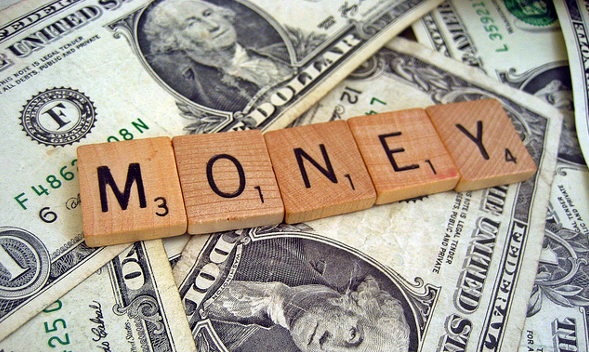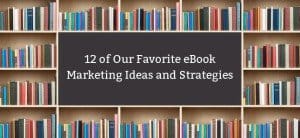How Much Should You Charge for Your eBook?

The hardest part of an eBook is writing it. The second hardest part is marketing it. The third hardest part is deciding on a price point. We’ve written plenty about the first two, so let’s examine the third.
There are, when it boils down to it, two different prices you can charge for your eBook. These are “money” and “not money.”
On the money side, you can price your eBook anywhere from one penny to the Gross Domestic Product of the United States. My guess is that, if you opt for the second option, you aren’t going to sell any copies. For a penny, you might sell thousands or millions of copies, but you might also be missing out on a lot of profit.
On the not money site, you have alternate forms of payment. For example, you might ask people for their email addresses, or you might ask them information about their company and their position, so you better learn about your followers and those who are interested in your book. It all depends on the information you want to gain and what information your users are willing to give.
In every case, you have a sliding scale. The longer and more valuable your book is, the more you can get away with charging. A 2,000-word book about writing content might not sell for more than $1, because content strategy books are common. A 300-page book about SEO in general, interviewing a dozen different industry thought leaders, could pull in $40 or $50 per copy.
Choosing the Compensation
When you’re selling your eBook, you have to decide if you want to sell it for money or for information. When you sell it for money, it’s possible you might be able to get an email opt-in or account registration out of the deal, but most of the time you’ll just get the cash. When you’re selling for information, you won’t be able to tack on a price; users will reject it.
You also have the option to take your normally paid eBook and give it away free, for either a certain subset of users or all users for a certain amount of time. This is typical of eBooks in a promotion period. It also works well for users publishing through Amazon Kindle Direct, where they can take advantage of the Kindle-based book renting system.
Now, do you want the cash, or do you want the information? Honestly, either one is a good option. If you go for the cash, you have profits to reinvest in other aspects of your business. If you go for information, you learn more about your audience. Of course, if you’re selling a book for cash, you can always give it away later. You can’t go vice versa.
I recommend selling for information, particularly if your eBook is your first offering, if you don’t have any name recognition behind it, or if you don’t know much about your audience. If you know your audience well, you’re in desperate need of profits or you’re interviewing thought leaders for content, you can sell the book for cash instead.
Selling Through Who
You also have to choose where you’re listing your book. Free books, or books sold for information, should be hosted on your own site. You can’t harvest customer data when selling through Amazon.
Amazon is great for publishing, though you have other options as well. Different sites have different reputations, prefer different content, and pay different amounts per sale. Payhip, for example, gives you a 100% royalty but doesn’t have the same size audience of a site like Amazon. Smashwords is the largest competitor for Amazon Kindle Direct, but you can put your book on both. Give your users options.
When you sell on Amazon, your royalty depends on your price. If you’re pricing your book anything higher than $10, you only earn a 35% royalty. In the sweet spot range from $3 to $10, you earn 70% per sale instead. Earning only 35% seems like a fool’s price point, but sometimes the profits are still worth it just based on Amazon’s volume.
Low or High?
When pricing your eBook to sell with cash, you have some options. I’m going to assume you’re publishing on Amazon, in much the same way that SEO assumes you’re talking about Google search results; the user base and tools available are too huge and too valuable to ignore.
Amazon has some built-in algorithms that promote books to users who have bought similar books in the past. Better, more popular books tend to be promoted more. This means that pricing lower is better.
Wait, how does that follow? It works like this: you price your book low, like $1 low. A ton of people see it and buy it, willing to risk $1 for a book from an author they maybe don’t know. You don’t make as much money directly as you might have on a higher price point, but you sell a bunch and you get a bunch of reviews.
Now Amazon starts passively promoting your book. You’re high in the sales lists, so a lot of people start to see your book popping up. They go in to buy it, thus further boosting it and giving you more money and exposure. Publish more books and the cycle can repeat itself.
Pricing higher gives you a much better royalty, but you get less in the way of sales because people don’t want to spend $5 or $10 on a book they aren’t sure they want. This is definitely the way to go if your book already has a lot of pre-orders or a lot of interest. It’s also the best option if you have a lot of deep, detailed information that will make your book a great resource for years to come. Shorter books require shorter price tags.
Keeping It Up
Once you’ve published a book and have been selling for a while, it’s time to write another. Keep in mind how you can continue to leverage your old book for more visibility and more profit. Publishing an updated version of your old book is a good way to get repeat sales, as long as the update is valid enough. Publishing entirely new books allows you to experiment with other price points or with other forms of compensation.
 ContentPowered.com
ContentPowered.com







The question of pricing your book is usually a very tricky one. Often because the value of your book is not decided by you, it’s decided by your readers. If they don’t think much of it, then it doesn’t matter how much you think it’s worth. The best bet is to try different prices and check the numbers. Always start with a lower price and up the price once you are sure there is a real demand for it. Get the first buyers to give you positive reviews and it becomes easier to make new sales. Happy selling!